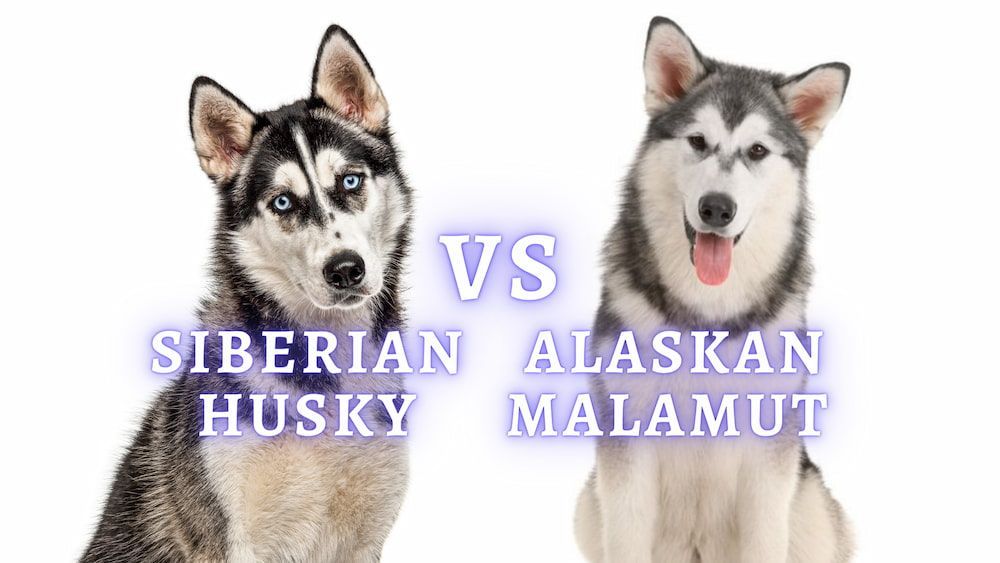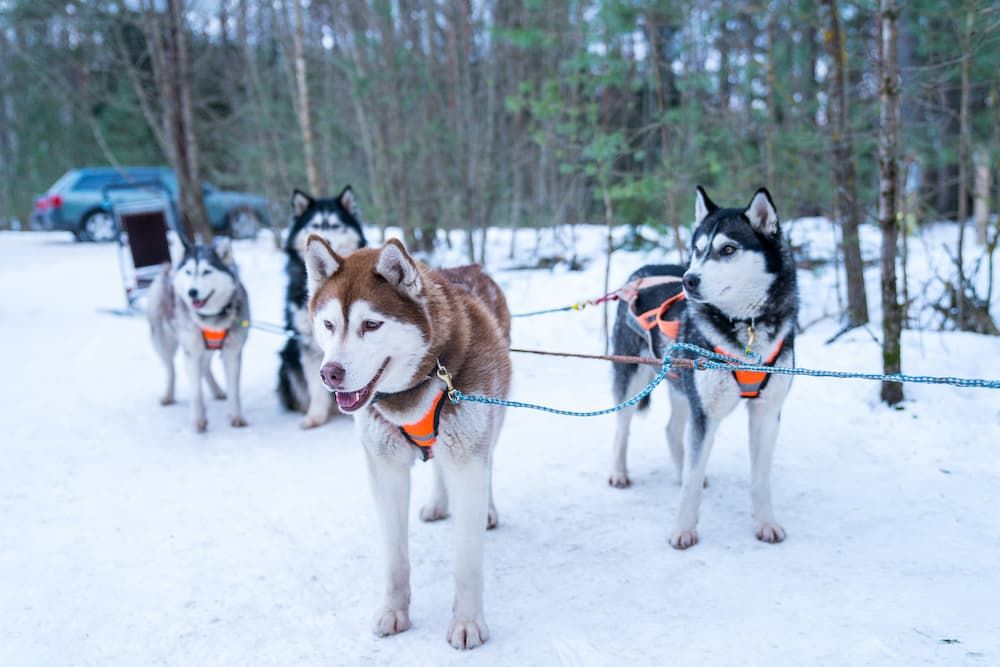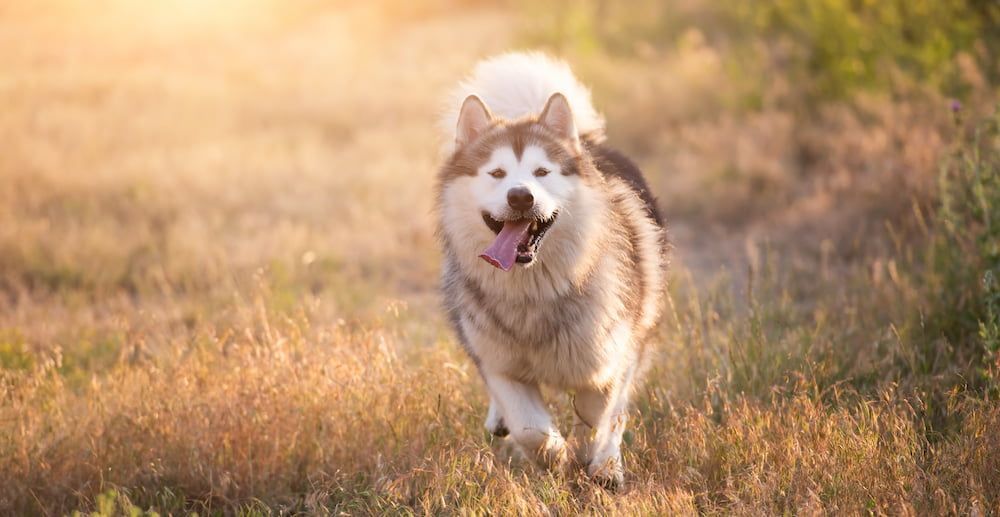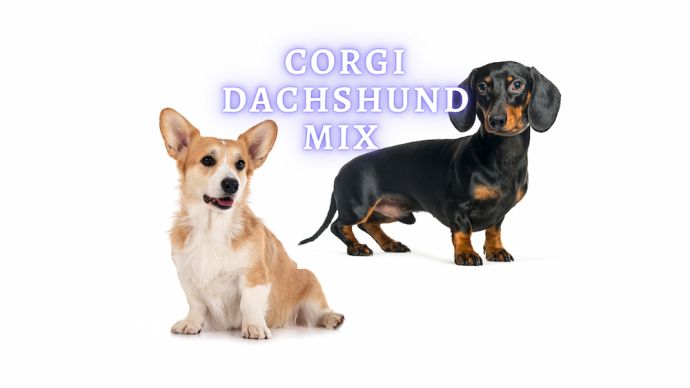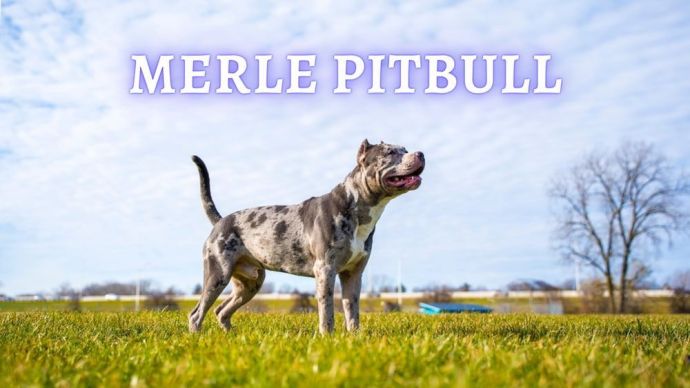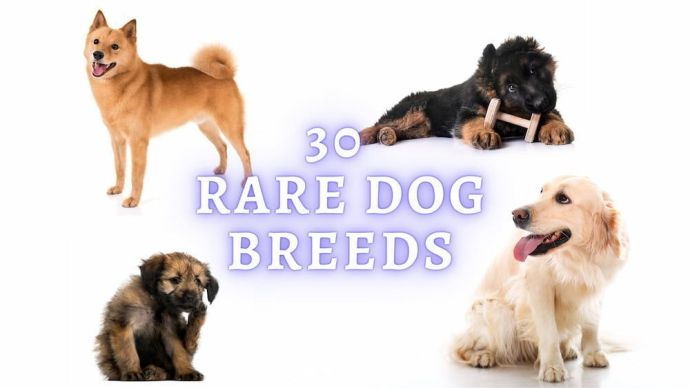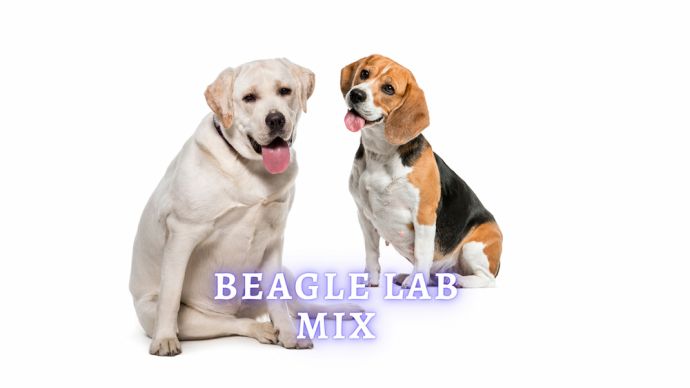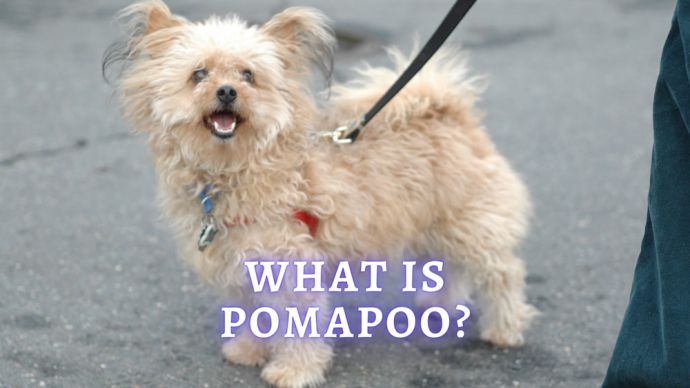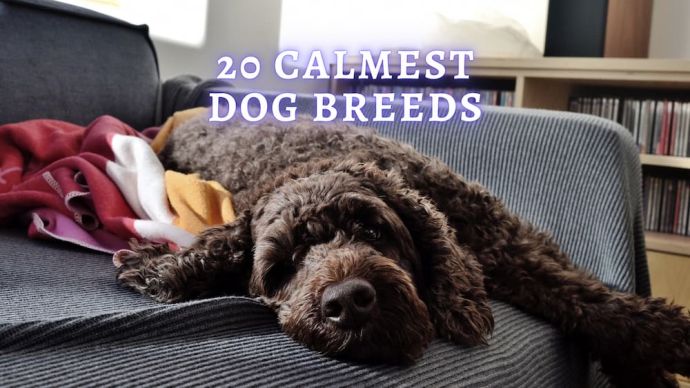Malamute vs. Husky: Alaskan Malamute and Siberian Husky Differences
Written by:
Author: Seb Jenkins
Seb is a professional SEO writer with a degree in Journalism, he has five years of experience in writing and editing. Seb specializes in topics like dog and cat breeds, aquarium guides, and pet care. He is passionate about educating and entertaining animal owners worldwide. In his spare time, Seb enjoys writing fiction novels.
View all 83 articlesLearn about our editorial process and veterinary review board.
Viewed: 5140
Updated on: 06/08/2023
It can be easy to confuse one dog breed with another, but it is essential to do your research before committing to caring for a canine friend. After all, thinking that one breed will act precisely like another would be a mistake. It also is not fair on the dog if you find out later down the road that you cannot meet their needs. One prime example of this confusion comes in the form of Siberian Husky dogs and Alaskan Malamutes. On the surface, they look very similar with their thick fluffy coats and winter aesthetics, but they are actually very different dogs. They have different personalities, like other things, need different types of care, and much more. So, let’s take a look at both breeds!
Characteristics
| Alaskan Malamute | Siberian Husky | |
| Height | 20-25 inches tall | 20-22 inches tall |
| Weight | 85 to 100 lbs | 35 to 60 lbs |
| Type of coat | Double coat with long length | Double coat with medium length |
| Colors | Black, grey, and red | Black, grey, white, and red |
| Lifespan | 10-12 years | 10-14 years |
| Personality | Friendly and love to play. Often very confident dogs. | They are friendly and love to play. Often very independent dogs. |
| Intelligence | Smart dogs. | Very intelligent dogs. |
| Social with other dogs | They can sometimes be aggressive with dogs of the same gender. | Usually friendly with all other dogs as they are pack animals. |
| Social with people | They love to be around and involved constantly. | Independent and don’t need constant human interaction. |
| Damage | They can often chew on things around the home and dig holes. | Known for trying to ‘escape’ by leaping over things. |
| Energy | Need daily exercise. | They have so much energy! They need lots of physical exercises every day, as well as some mental stimulation. |
What is the difference between a Husky and a Malamute?
Let’s cross-reference those stats and facts to reveal the main differences between Siberian Huskies and Alaskan Malamutes.
- Loyal companion vs. pack dog: While Malamutes love constant attention from their owners and humans in general, the Siberian Husky is far more independent. That’s not to say that they don’t enjoy your company, but they do not rely on it. They can happily go about doing their own thing if you are busy, for example. The best way to explain it is that Malamutes will always be most loyal to you, their owner, while Siberian Huskies are always going to be more loyal to their pack. That’s just engrained in their DNA. If given a choice, Huskies would love to live alongside other dogs, while Malamutes are more than happy to live alone with you.
- Health: Unfortunately, Malamutes are far more at risk of health problems than Siberian Huskies and also have a slightly shorter life span due to this fact.
- Size: Malamutes are by far the bigger of the two breeds and the heavier, while Siberian Huskies are light and nimble on their feet. As we mentioned before, they can also jump great heights to escape over the garden fence.
- Intelligence: Huskies are also known to be far more intelligent than Malamutes, even bordering on cunning, so they will likely keep you on your toes.
What are the similarities between Siberian husky and Alaskan Malamute?
Now let’s take a look at the similarities and overlaps between the two breeds of dogs.
- Friendliness. Even though Malamutes are more inclined to spend their time around people, both dog breeds are equally friendly with humans. So, you will have no trouble in terms of bonding with your new canine friend, no matter whether you pick a Husky or a Malamute.
- They need a leader. Both breeds will also need a strong owner. What we mean by this is someone they can trust. As both are used to living in packs in the wild, you need to serve as their pack leader. That means remaining strong, loyal and teaching them the dos and don’ts.
- Fur and coat maintenance. In terms of their fur, both breeds have a double coat. The only slight difference is that Malamutes have long hair and Huskies have medium-length hair. Both breeds shed this fur twice per year in the fall and spring, so watch out for that. That likely means a lot of stray hair on the floor and on furniture within your house.
- Energy level. Both Huskies and Malamutes have very high energy levels, although the former is slightly higher. This means that they need daily exercise in walks, playing in the garden, and more. They also enjoy mental stimulation, especially Huskies.
- Hunters by nature. Both breeds have what is known as a high prey drive. This means that they will hunt and act aggressively towards many other smaller animals, including cats. Therefore, we would advise keeping Huskies or Malamutes if you have any other pets.
The history of the Alaskan Malamute and the Siberian Husky
It can be nice to know a little about the history of a dog breed before welcoming them into your home. Both Malamutes and Huskies are very old breeds of dogs dating back to ancient times and, unsurprisingly, come from naturally cold climates. As the names suggest, Malamutes originated from Alaska while Huskies were originally bred in Easter Siberia by the Chukchi people. However, both Huskies and Malamutes have a history of being used as sled dogs in cold climates. Huskies specialized in fast-paced travel while Malamutes were used for moving heavier sleds. Malamutes often worked solo and Huskies worked in packs.
RELATED: Best Harness for Husky
Recognition for Huskies and Malamute
Both breeds are recognized by:
- The AKC [1] [2]
- UK Kennel Club [3][4]
- Federation Cynologique Internationale [5]
- Australian National Kennel Council [6]
- United Kennel Club [7]
- Canadian Kennel Club [8]
- New Zealand Kennel Club [9]
Exercise requirements
Both breeds have very similar requirements for exercise; they have a lot of energy to burn off and love to run around.
As such, if you commit to looking after a Malamute or a Husky, you should really have around one to two hours of free time per day to take them out for vigorous exercise. If you fail to give them the exercise they need, all that built-up energy may come back to you in the form of destruction around the home.
Dietary requirements
Both Malamutes and Huskies have pretty much the same dietary requirements. The only difference would come in the size of the animals, as Malamutes are often far larger and therefore need a little more food.
It is important to provide your dog with a well-balanced diet of both wet and dry food. Medium to high protein diets are ideal, assuming that you are giving your dog plenty of exercises. Malamutes and Huskies need between one and two hours of vigorous exercise per day.
When it comes to treats, which are obviously useful when training and rewarding your dog, Malamutes and Huskies love many types of fruit, so give that a go.
Husky and Malamute noise
Malamutes and Huskies both love to bark and howl. Malamutes are definitely the quieter of the two breeds, but we would still describe both of them as loud dogs. Huskies love to bark and howl no matter the time or place, especially when they are in larger groups of dogs. Fortunately, you can somewhat train the noisiness out of young Malamute puppies if you get on top of things. Do not acknowledge or rewards your Malamute’s barking and howling, prompting them to do it far less.
Cost of Siberian Huskies vs. Cost of Alaskan Malamute
Of course, the cost of any dog breed varies on age, gender, lineage, etc. However, we will look at some averages to give you some idea of what a Husky and Malamute may cost. Malamute puppies often cost around $500-$2500, with Siberian Huskies ranging from $700 to $2500. The top-quality puppies of both breeds can cost you up to $6000–6500.
Conclusion
In conclusion, the Siberian Husky and the Alaskan Malamute may look similar, but they have very different breeds with very different needs. We advise that you read through our information, stats, and research to make a more informed decision if you decide between the two. If one of the breeds, or both, does not match your personality or feel as though you wouldn’t take proper care of them, you should look towards an alternative. If you are leaning towards medium breeds but less energetic and with lower coat maintenance, consider breeds like Portuguese Water Dog, Entlebucher Mountain Dog (Imp), or German Pinscher. Northern fluffy breeds with lesser activity needs are Swedish Lapphund (Imp), Finnish Lapphund, and Finnish Spitz.
FAQs
Are Malamutes aggressive?
The answer to this question is yes and no. Malamutes are incredibly loving and friendly with humans. In fact, they love nothing more than to follow you around and constantly be involved in your day. However, this does not always transfer over to other dogs. Malamutes have been known to act aggressively towards dogs of the same sex, meaning they may not be the best pets if you already have a dog of that gender. They also have a high prey drive, meaning they will hunt down any smaller animals. Again, this makes it near impossible to have other smaller pets around the house like cats, rabbits, or guinea pigs.
Are Malamutes good family dogs?
Malamutes are great family dogs as long as the family matches up well to the breed’s personality. They love to follow you around and constantly be involved with your goings-on. They love spending time with humans and playing. They also need regular exercise as they have high energy levels. Therefore, they need a family that has plenty of time for them. As long as you can commit the time and show they love, Malamutes will return it and then some.
Are Malamutes as loud as Huskies?
Both Malamutes and Huskies love to bark and howl. Both breeds are loud in general, but Huskies usually louder. The best thing to do is train this out of them as much as possible from a young age. If you do not acknowledge or rewards your Malamute’s barking and howling, they tend to do it a lot less. Huskies, meanwhile, are known for being extremely loud, especially when with other dogs.
Are Huskies and Malamutes good dogs for first-time owners?
In truth, both Huskies and Malamutes are tricky dogs to own for first-timers. If you are looking to welcome your first canine friend into the home, they may not be the ideal choice. Not only do they need a whole lot of exercise and stimulation, but they also have to see you as the alpha of their pack. If they don’t respect you as the alpha, they will walk all over you. Most Huskies and Malamutes need one to two hours of vigorous exercise per day. If they are left with all this built-up energy, they can often become destructive around the home.
Do Huskies and Malamutes make good guard dogs?
In short, no. Huskies and Malamutes are not ideally suited to the job of a guard dog as they are too trusting and friendly in nature. They will often greet strangers as they would greet a friend or family member. Not exactly ideal if there is an unknown intruder in your home. Having said that, Malamutes and Huskies may, at the very least, serve as visual deterrents for any intruders.
Are Huskies better pets than Malamutes?
Everything depends on the family itself and how well it matches up to the needs and personality of the individual dog. However, generally speaking, Malamutes tends to be better pets than Husky. But don’t let that put you off at least researching both breeds thoroughly.
Article Sources:
- “Siberian Husky Dog Breed Information.” American Kennel Club, 7 June 2021, akc.org/dog-breeds/siberian-husky/.
- “Alaskan Malamute Dog Breed Information.” American Kennel Club, 19 May 2021, akc.org/dog-breeds/alaskan-malamute/.
- “Siberian Husky.” The Kennel Club, thekennelclub.org.uk/search/breeds-a-to-z/breeds/working/siberian-husky/.
- “Alaskan Malamute.” The Kennel Club, thekennelclub.org.uk/search/breeds-a-to-z/breeds/working/alaskan-malamute/.
- Fédération Cynologique Internationale. 1 July 2021, fci.be/en/.
- “Breed Standards.” Australian National Kennel Council, ankc.org.au/Breed/Index.
- Breed Standards | United Kennel Club (UKC). 17 May 2021, ukcdogs.com/breed-standards.
- “All Breeds.” Canadian Kennel Club, ckc.ca/en/Choosing-a-Dog/Choosing-a-Breed/All-Dogs.
- “NZ Registered Pedigree Breed Information.” Dogs New Zealand, dogsnz.org.nz/breeds/select-breed.
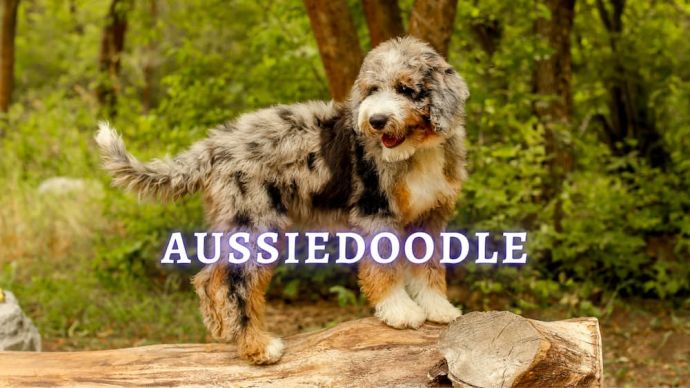 Dog Breeds Aussiedoodle: Breed Info, Personality, Activity Level and Life Span
Dog Breeds Aussiedoodle: Breed Info, Personality, Activity Level and Life Span - 1282
- 0
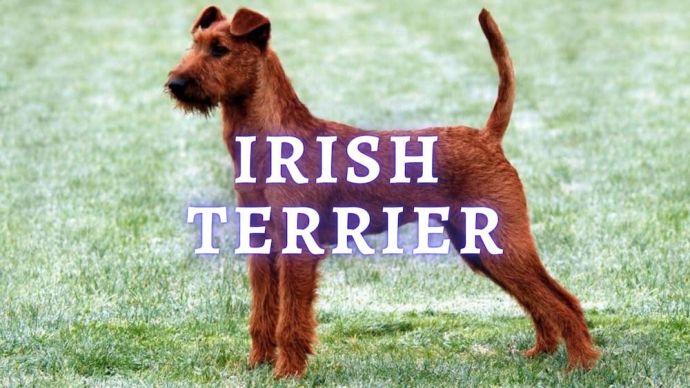 Dog Breeds Irish Terrier Breed Information: Health, Activity Level, Temperament and Personality
Dog Breeds Irish Terrier Breed Information: Health, Activity Level, Temperament and Personality - 1937
- 1
 Dog Veterinary Tips Why is my Dog throwing up: Causes and Preventing (Veterinary Advice)
Dog Veterinary Tips Why is my Dog throwing up: Causes and Preventing (Veterinary Advice) - 23424
- 5
 Dog Care Why Is My Dog Bleeding From Its Butt? Causes and treatment of rectal bleeding in the dog
Dog Care Why Is My Dog Bleeding From Its Butt? Causes and treatment of rectal bleeding in the dog - 22076
- 0
 Dog Care My Dog Keeps Scratching His Mouth: Reasons Why Your Dog Scratching Face
Dog Care My Dog Keeps Scratching His Mouth: Reasons Why Your Dog Scratching Face - 17561
- 1









